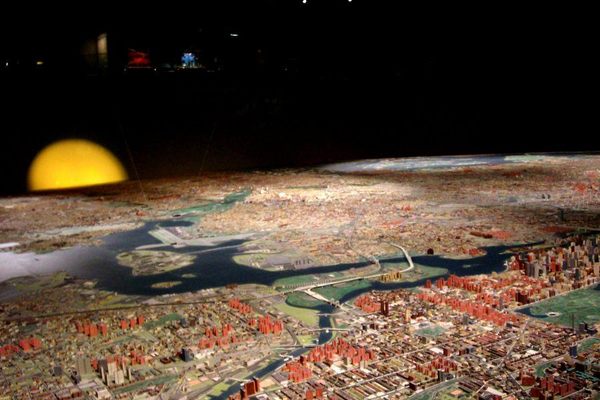Relics Of The World’s Fair: Melbourne
Eye Of the Emu (by Mugley, via Flickr)
After visiting Paris, Chicago, Barcelona, New York City, Montreal, and St. Louis, Atlas Obscura’s ongoing tour of Worlds’ Fair relics now moves further south.
Royal Exhibition Building, 1880 (courtesy Royal Exhibition Building)
Melbourne’s 1880 International Exhibition was the first officially-recognized World’s Fair in the Southern Hemisphere, after a smaller agricultural fair one year earlier in Sydney. The fair was housed in the Royal Exhibition Building, a huge exhibition hall in the style of the grand exhibition halls of Europe. Almost all of them at once, in fact — architect Joseph Reed used design elements from the German Rundbogenstil architecture style, French architecture and design, and modeled the hall’s central dome on a cathedral in Florence.
Royal Exhibition Building today (courtesy Royal Exhibition Building)
After the fair, the hall was used as a catch-all for events — Australia’s first Parliament met in the building in 1901, Australia first unfurled its flag atop its dome in 1901, and a handful of events from the 1956 Olympics took place inside.
Melbourne International Exhibition Building (via Wikimedia)
Foundation Stone (photograph by Brian Giesen)
The Big Picture - Opening Of The First Parliament (painting by Tom Roberts, via Wikimedia)
The hall was considered an old-fashioned eyesore in the 1940s, and narrowly escaped demolition in 1947. Melbourne’s City Council ultimately decided to save the hall, but one of its wings was still torn down in the 1970s. Even so, the Royal Exhibition Building was named an UNESCO World Heritage Site in 2004 — the first building in Australia to earn that distinction.
Inside the Royal Exhibition Building today (courtesy Royal Exhibition Building)
Today it is used as a commercial exhibition hall, and is the home of Melbourne’s International Flower and Garden Show each year. The nearby Melbourne Museum also leads guided tours of the hall.
2013 Melbourne International Flower Show (photograph by Chris Phutully)
The Royal Exhibition Building sits inside the Carlton Gardens, which have also earned UNESCO World Heritage distinction themselves. The gardens pre-date the 1880 fair by about 40 years, but were drastically re-vamped and redesigned to serve as the 1880 Fairgrounds. Now the gardens are a perfect example of Victorian-era landscape design, with wide lawns dotted with flowerbeds, and a network of tree-lined paths laid out to offer the best views of the Royal Exhibition Building.
Carlton Gardens (photograph by Brian Giesen)
Carlton Gardens (photograph by Aenneken, via Flickr)
But the Carlton Gardens are noted for their botanicals as well as their historic significance — the garden designers collected a huge array of European and Australian trees for the gardens, including groves of elm trees. Then, 30 years after the fair, elm trees throughout Europe and the Americas were wiped out by Dutch Elm disease, but the elms in Carlton Gardens were spared, making the Carlton Garden collection one of the few places to find elm trees in the world.
photograph by Jennifer Morrow
Here are more images from the 1880 Melbourne International Exhibition:
The construction of the International Exhibition (via Museum Victoria)
Photograph of the International Exhibition (via State Library of Victoria)
Photograph of the International Exhibition (via State Library of Victoria)
The British Court (via State Library of Victoria)
The Exhibition Bill (via State Library of Victoria)
Westfalische Union display (via State Library of Victoria)
The Fiji Court (via State Library of Victoria)
View from the balcony, illustrated in the Australian News (via Museum Victoria)
A diorama of a bush scene in the South Australian Court (via Douglas Stewart Fine Books)
Aerial drawing of the International Exhibition (via Wikimedia)
The Victorian Court (via Museum Victoria)
Wood engraving of the Fine Arts Gallery (via National Gallery of Victoria)
Wood engraving of the opening ceremony (via National Gallery of Victoria)
William Powell Frith, “An Evening at the International Exhibition (1888) (via Museum Victoria)
Stay tuned for more in our series on World’s Fair relics, and be sure to visit Paris, Chicago, Barcelona, New York City, Montreal, and St. Louis.







Follow us on Twitter to get the latest on the world's hidden wonders.
Like us on Facebook to get the latest on the world's hidden wonders.
Follow us on Twitter Like us on Facebook